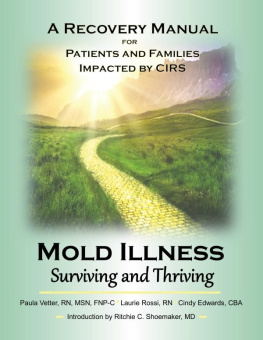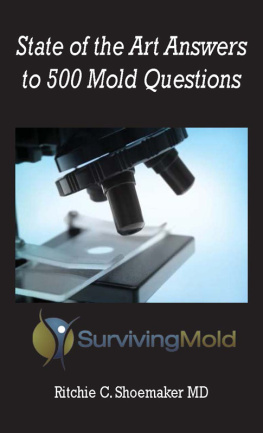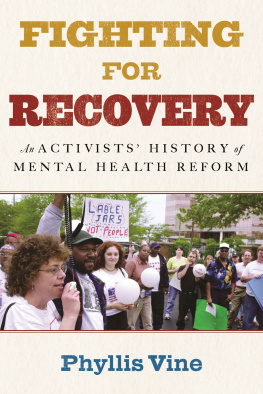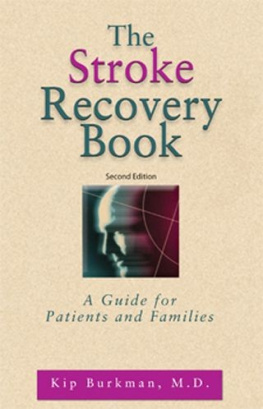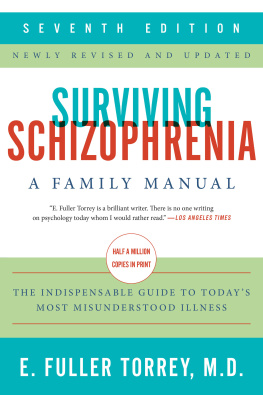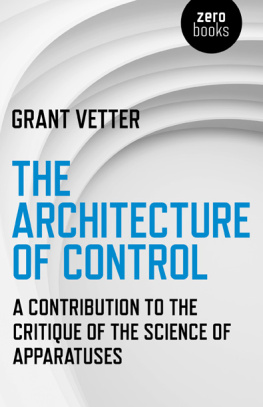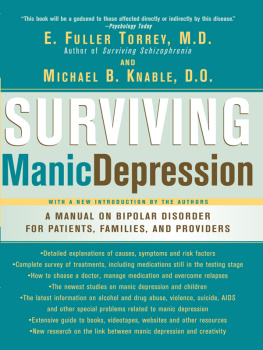Copyright 2017 by Paula Vetter FNP-C, Laurie Rossi R.N., and Cindy Edwards C.B.A.
All rights reserved. No portion of this publication may be reproduced, stored in a retrieval system, or transmitted, in any form or by any means (electronic, mechanical, photocopy, recording, or otherwise) without the prior written permission of the copyright owners.
Printed in the United States of America
Print ISBN: 978-1-54392-137-3
eBook ISBN: 978-1-54392-138-0
DEDICATION
This manual is dedicated to Dr. Ritchie Shoemaker, the visionary pioneer who identified and tirelessly unraveled the mysteries of the previously elusive syndrome, now known as CIRS.
Dr. Shoemakers relentless dedication to rigorous scientific investigation and documentation produced a protocol that has empowered thousands of patients to reclaim their lives.
The Surviving and Thriving Recovery Manual is a tribute to the living legacy of Dr. Shoemaker.
This manual is also dedicated to the struggles of countless thousands of CIRS patients, many still undiagnosed. Here you will find a voice, a beacon of hope, and a roadmap to recovery. You are not alone.
TESTIMONIALS FROM CIRS PATIENTS
In working with Paula and Laurie, I was taught about the physiology of CIRS..what was happening to my body and how we were going to reverse these devastating effects. I had never had medical treatment like this before. Someone actually cared enough about me to teach me to be my own advocate going forward. I now had the tools to manage CIRS.
When I got the results of my home and work mold tests, Laurie and Paula put me in touch with Cindy Edwards, an amazing CIRS literate environmental professional and certified building analyst. Cindy was able to walk me through the details of what I needed to do to make my environments safe for me. All of this was a tremendous amount of work but my team was there for me every step of the way. They gave me encouragement and even tough love when I needed it. They even helped to educate my local primary care doctor so that she could provide the appropriate follow-up care for me and for others with CIRS.
It has been a little over four years since I first became sick. I am finishing up my VIP and feeling better than I have in longer than I can remember. All of my blood work is slowly improving and I am finally feeling hopeful about my future again thanks to my partnership with this team of professionals. K B
Paula and Laurie provided me with comprehensive information and references to educate me about CIRS, its causes, and its multiple complex effects. Laurie taught a very thorough class to reinforce this learning and to teach us about how to get better through symptom tracking, the Shoemaker Protocol, and appropriate mold remediation in our homes and workplaces. Paula and Laurie scheduled periodic appointments with me to keep track of biomarkers and help me with each step of the protocol. Cindy Edwards, my home performance and biotoxin specialist, consulted with me on a regular basis about how to make sure that my home was safe for me and my family.
I am now a good way through the protocol. I am grateful to them for their knowledge, professionalism, accessibility, and conscientiousness. This is such a difficult and complicated disease that I could never have navigated treatment on my own with my primary care physician.
Most of all, I am grateful to Paula, Laurie, and Cindy for their kindness, empathy, and integrity. They care deeply about their patients and want them to get better. They invited questions and answered all I had with plentiful information and references to resources, and treated me with respect. This team has helped me get better so that I will be able to live a full life, and I will never forget that. PD
TABLE OF CONTENTS
INTRODUCTION
It is with great pleasure that I write to introduce the world to the dedication of Paula Vetter, FNP-C, Laurie Rossi, RN, and Cindy Edwards, C.B.A. They have been working as a team for several years to distill thousands of pages of academic material on all aspects of diagnosis and treatment of chronic inflammatory response syndrome (CIRS) into a short, concise, reader-accessible manual. This publication belongs on the desk of every physician who sees patients with CIRS, every patient who has concerns about a multi-system, multi-symptom illness, and anyone who lives, works or goes to school in the interior environment of a water-damaged building (WDB).
The blunt facts are that CIRS is incredibly common in todays American society. Back in 2011, the National Institute for Occupational Safety and Health published their opinions that suggested that as many as 50% of US buildings were water-damaged. 50% seems low based on surveys taken by thousands of patients.
Well, so what? Who needs a manual about treatment? WDB never hurt a flea, much less a person, right? Nope. CIRS is one of the most compelling reasons for the explosion of CFS, fibromyalgia and depression seen in the US.
So many people ill from WDB? How can that be? The answer is simple: It is all based on inflammation that is rooted in innate immune responses to foreign invaders, called antigens. The inside of a WDB is always a soup of antigens, with sources coming from microbes like fungi, actinomycetes and bacteria. Mycotoxins make up about 1% of the risk (not a typo. Mycotoxins are trivial in importance compared to actinomycetes and bacteria). Antigen detection leads to inflammation, with harmful gene activation just a moment away from innate immune inflammation.
If we assume that only half of the people in the US might have exposure to WDB that means that maybe 160 million people are at risk for development of CIRS. Since we know that only 25% of all patients have the genetic makeup (HLA haplotype) that can create increased relative risk (susceptibility) to the innate immune illness that is CIRS that means that 40 million people in the US could possibly have problems related to untreated innate immune inflammation.
What that number means is that we add up the number of patients with symptoms-only diagnoses like fibromyalgia, Chronic Fatigue Syndrome, Post Lyme syndrome, reflex sympathetic dystrophy, even depression, as well as Post Traumatic Stress Disorder, and many others we get about 40 million. There are real possibilities that the 40 million number of patients with untreated chronic inflammatory illness is right on the button.
If WDB adds to the problems of those with Post-Lyme, and that occurrence surely is true, the good news is that we have peer-reviewed published documentation of efficiency of a treatment protocol, which step by step will arbitrarily take about one month (each) to correct one abnormality followed by another of innate immune inflammation. Following this protocol gives physicians the ability to measure objective parameters each step along the way, verifying the time for the next step has arrived. We also have the capability to correct differential genomic activation (transcriptomics). Finally, we can show that use of this sequential protocol corrects multinuclear atrophy of grey matter structures in the brain.
These are stunning results.
A barrier to understanding CIRS and its application to treatment of complex illnesses requires learning a new jargon; requires learning a new language; and demands rigorous approaches to science where assumptions are not tolerated and only one step at a time is undertaken with monitoring of each step along the way. We dont permit guesses; we dont permit assumptions, we dont permit speculation. Follow the data!

